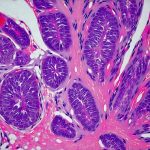Prostatitis, inflammation of the prostate gland, is a surprisingly common condition affecting men of all ages, though it’s often discussed in hushed tones due to its intimate nature. While frequently associated with urinary symptoms like pain, frequency, and urgency, the underlying causes can be far more complex than simple infection. Increasingly, research points to a significant interplay between prostatitis and hormonal imbalances, suggesting that disruptions in the endocrine system may not only contribute to the development of the condition but also hinder effective treatment. Understanding this connection is crucial for holistic management and improved patient outcomes, moving beyond symptom suppression toward addressing root causes.
The conventional approach often focuses on antibiotics for presumed bacterial infection, but chronic prostatitis (the most prevalent form) frequently doesn’t respond well to such treatments. This lack of response highlights the need to explore alternative pathways, with hormonal dysregulation emerging as a key area of investigation. Hormones like testosterone, dihydrotestosterone (DHT), and cortisol play vital roles in prostate health, immune function, and inflammation regulation. Imbalances can disrupt these processes, creating an environment conducive to prostate inflammation and chronic pain. Furthermore, the complex bidirectional relationship between hormones, the nervous system, and the immune system further complicates the picture, demanding a nuanced understanding for effective intervention.
Understanding Prostatitis Types and Their Hormonal Links
Prostatitis isn’t a single disease; it’s categorized into four main types: acute bacterial prostatitis, chronic bacterial prostatitis, chronic prostatitis/chronic pelvic pain syndrome (CP/CPPS), and asymptomatic inflammatory prostatitis. While acute bacterial prostatitis is readily identified and treated with antibiotics, the remaining three – particularly CP/CPPS – pose diagnostic and therapeutic challenges. Hormonal imbalances appear to play a more prominent role in these non-bacterial forms. For instance, studies have shown correlations between lower testosterone levels and increased chronic pelvic pain in men experiencing CP/CPPS. Low testosterone can impact muscle function, nerve sensitivity, and immune response, all of which contribute to the experience of chronic pain.
Chronic bacterial prostatitis, despite having a bacterial component, often persists even after antibiotic treatment, hinting at underlying factors beyond infection alone. DHT, a potent androgen derived from testosterone, is crucial for prostate growth but can also contribute to inflammation if levels are excessively high or if there’s an imbalance between androgens and other hormones. Cortisol, the body’s primary stress hormone, also deserves attention; chronic stress and elevated cortisol levels can suppress immune function and exacerbate inflammatory processes within the prostate. The interplay between these hormonal axes—and their disruption—is a central theme in understanding persistent prostatitis symptoms.
Finally, asymptomatic inflammatory prostatitis is often discovered incidentally during evaluations for other conditions. While it doesn’t cause noticeable symptoms, its presence suggests an underlying inflammatory process that could be influenced by hormonal factors and potentially contribute to future prostate issues. This highlights the importance of preventative strategies and proactive hormone management.
The Role of Testosterone and Dihydrotestosterone (DHT)
Testosterone is often considered a “male” hormone but plays vital roles in overall health for both men and women, including immune function, energy levels, and muscle mass. In relation to prostatitis, low testosterone can weaken the pelvic floor muscles, leading to reduced support for the prostate and bladder, potentially exacerbating urinary symptoms. It also impacts nerve sensitivity, increasing the perception of pain. DHT, however, presents a more complex picture. While essential for prostate development, excessive DHT levels have been linked to benign prostatic hyperplasia (BPH) and may contribute to inflammation within the prostate gland.
The balance between testosterone and DHT is critical. An imbalance – specifically, a higher DHT-to-testosterone ratio – can promote inflammation and increase the risk of chronic prostatitis symptoms. This imbalance isn’t always related to overall testosterone levels; it’s often about how testosterone is metabolized in the body. Enzymes like 5-alpha reductase convert testosterone into DHT, and variations in enzyme activity or sensitivity can significantly influence DHT levels. Moreover, inflammation itself can disrupt hormonal balance, creating a vicious cycle where prostate inflammation leads to hormonal imbalances that further fuel inflammation. Addressing this requires a comprehensive approach beyond simply lowering DHT – it necessitates restoring overall hormonal equilibrium and managing inflammatory processes.
Exploring the Stress-Cortisol Connection
Chronic stress is ubiquitous in modern life, but its impact on prostate health is often underestimated. When the body experiences prolonged stress, the hypothalamic-pituitary-adrenal (HPA) axis becomes activated, leading to increased cortisol production. While cortisol is essential for short-term survival, chronically elevated levels can have detrimental effects. Cortisol suppresses immune function, making individuals more susceptible to infections and hindering the body’s ability to resolve inflammation effectively.
Furthermore, high cortisol levels interfere with testosterone production. The HPA axis takes precedence over the hypothalamic-pituitary-gonadal (HPG) axis – responsible for hormone production including testosterone – during times of stress. This means that when cortisol is consistently elevated, testosterone production can be suppressed, exacerbating hormonal imbalances and further weakening the immune system. Managing chronic stress through techniques like mindfulness, meditation, yoga, or deep breathing exercises is therefore a crucial component of prostatitis management.
The Gut-Prostate Axis: Inflammation and Hormonal Modulation
The gut microbiome—the trillions of bacteria residing in our digestive tract—is increasingly recognized as a key player in overall health, including prostate function. A disrupted gut microbiome (dysbiosis) can lead to increased intestinal permeability (“leaky gut”), allowing inflammatory molecules to enter the bloodstream and trigger systemic inflammation. This inflammation can directly impact the prostate gland, exacerbating prostatitis symptoms.
The gut also plays a role in hormonal modulation. Certain gut bacteria are involved in the metabolism of hormones like testosterone and estrogen. Dysbiosis can disrupt this process, leading to imbalances that contribute to prostate issues. Moreover, chronic inflammation within the gut can alter hormone signaling pathways, further complicating the picture. Dietary interventions aimed at restoring gut health – such as incorporating probiotic-rich foods, reducing processed sugars, and increasing fiber intake – are gaining recognition as complementary therapies for prostatitis management.
Lifestyle Modifications for Hormonal Balance and Prostate Health
Beyond specific treatments, lifestyle modifications can play a significant role in restoring hormonal balance and improving prostate health. Regular exercise is beneficial not only for overall fitness but also for hormone regulation; it helps boost testosterone levels, reduce cortisol levels, and improve immune function. A diet rich in anti-inflammatory foods—such as fruits, vegetables, fatty fish, and nuts—can help combat chronic inflammation and support hormonal balance.
Adequate sleep (7-9 hours per night) is also crucial; sleep deprivation disrupts hormone production and increases stress levels. Finally, minimizing exposure to endocrine disruptors – chemicals found in plastics, pesticides, and personal care products that can interfere with hormone function – is essential for maintaining hormonal health. These seemingly small changes, when implemented consistently, can have a profound impact on prostate health and overall well-being. It’s about adopting a holistic approach that addresses the underlying causes of prostatitis rather than simply masking its symptoms.





















